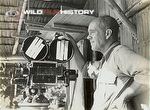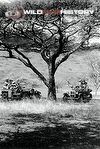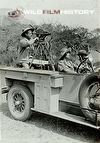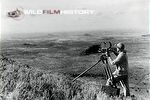Martin E. Johnson
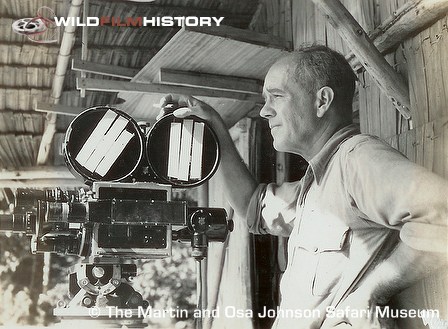
One of the main forces behind the popularity of early safari films, Martin Johnson developed a passion for photography whilst working at his father’s Eastman-Kodak franchise. A keen traveller, he left home at 14 to explore Europe, returning as a stowaway and with precious time to spare, joined Jack London’s round-the-world expedition in 1907.
Officially on the expedition as a cook, his culinary skills reportedly left a lot to be desired but he returned with a wealth of interesting photographic work. Touring the U.S. with this display, he met his future wife Osa and they married in 1910. Spending several seasons on the vaudeville circuit they raised enough money for their first expedition, setting off for Vanuata and the Solomon Islands in 1917. Their accompanying film, Among the Cannibal Isles of the South Pacific (1918), was one of the most successful of the early ‘exploration come documentary’ productions and was followed in quick succession by Jungle Adventures (1921) and Head Hunters of the South Seas (1922).
Best remembered for their safari work, the couple reputedly began working with wildlife after receiving a cable from their financers reading, “Public tired of savages. Get some animal pictures”. In 1921 they embarked on their first African expedition and returning numerous times they released many films about the landscape, the animals and its people, including, in 1928 their famous travelogue, Simba. In contrast to modern day wildlife features, the couple were just as quick with their rifles as they were with their cameras and their productions often featured animals being shot to death.
The 1930s saw them producing Congorilla (1932), the first ever film with sound authentically recorded in Africa, and Baboona (1935) for which they flew the length of the continent. Their last film together was Borneo (1937). In 1937, whilst completing a lecture tour with footage from their final trip to Borneo, the Johnsons’ plane crashed in bad weather and Martin died the following day from his injuries.



